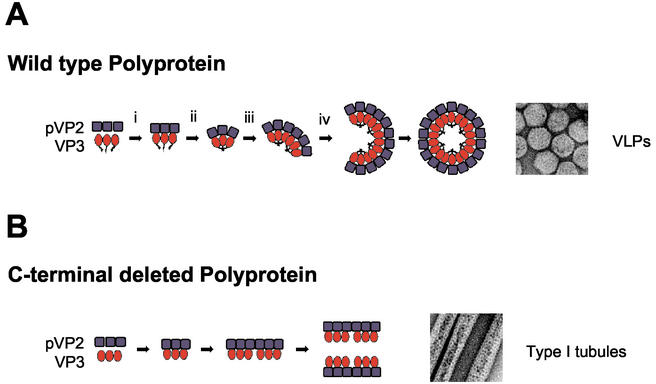FIG. 10.
VLP and type I tubule assembly models. (A) VLP assembly. (i) Polyprotein synthesis followed by self-cleavage releases the capsid proteins pVP2 and VP3; (ii) establishment of pVP2/VP3 interactions; (iii) VP3 oligomerization induces a series of conformational changes leading to bending of the pVP2 lattice and formation of fivefold vertexes; (iv) capsids are closed, generating mature VLPs. As has been suggested before, formation of fivefold vertexes and pVP→VP2 conversion might be tightly associated processes (6). (B) Formation of type I tubules. Deletion of the VP3 C-terminal end abrogates VP3 oligomerization, leading to the exclusive formation of type I tubules. Formation of type I tubules has also been observed in IBDV-infected cells as well as in cells infected with the virus expression vectors VT7/Poly and FBD/Poly-VP1, efficiently producing VLPs. It is unclear whether type I tubules in these cells represent intermediate assemblages involved in capsid formation or dead-end aberrant structures.

